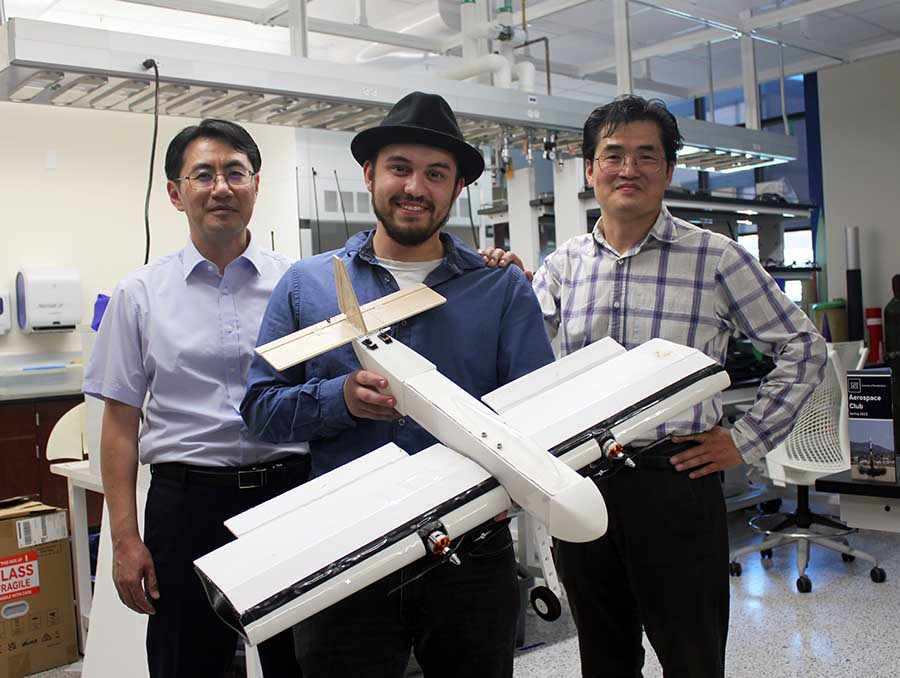Engineering senior Jeremy La Porte has always been interested in the electronic aspects of systems, especially how such systems are powered. That has led to an interest in wireless power transfer (WPT) to unmanned aerial vehicles (UAVs), something he will be researching this school year, thanks to two scholarships.
La Porte, who is majoring in electrical engineering, has received a $4,000 grant through the National Science Foundation (NSF) to study charging towers that might be used to transfer power to drones used in wildfire prevention systems. He also received a $3,000 NASA Nevada Space Grant Scholarship to study WPT as it relates to interplanetary use-cases, such as the Mars exploration and colonization mission.
“The NSF’s fire watch project is to design a drone system in general with WPT (a technology that allows transmission of energy through an air gap to a load without any interconnecting cables) to fly through smoke and do long, long distances,” La Porte said. “Instead of using solar panels, (it’s about) wanting to grow the electrical side of it.
“Our main focus is to power the drones wirelessly while accounting for a wider range of environmental situations,” he added. “Because wireless power is getting popular nowadays, now is the time to find better methods to optimize these systems.”
La Porte credits Electrical & Biomedical Engineering faculty Jeongwon Park and Jihwan Yoon mentoring him throughout the two projects.
“(I’ve seen) his outstanding achievements and hard work in pursuing his education and gaining valuable experience in various fields,” Park said. “His academic and professional credentials are impressive and I am confident he has a bright future ahead of him.”
La Porte also was supported with a grant from the Bean Space Foundation.
Aerospace Club lends a hand
La Porte, who is involved with the University’s Aerospace Club and plans to collaborate with the group and other WPT teams on campus to conduct research for the NSF grant. Part of that involves utilizing the aerospace club’s mobile plane in this work.
As for the NASA Nevada project, it also involves drones, but it compares three charging systems.
“There’s three different configurations of that wireless power transfer system,” La Porte said. “Inductive (how people charge their phone with the two coils); microwaves (which is actually beaming long-range waves out and picking up), which is less efficient but a part of the research; and transferring power over the Infrared (IR) spectrum (this will need greater care as it is more dangerous making my last method to study).”
La Porte said the grant funding will support the purchase of extra parts for the research equipment, but the grants also provide another opportunity: real-world experience.
“The hands-on experience is helping me learn so much more than what the classes teach you,” La Porte said. “I have actually already finished the (fixed wing, similar to radio-controlled plane) drone and we’re going to be able to test it in a few weeks.”















